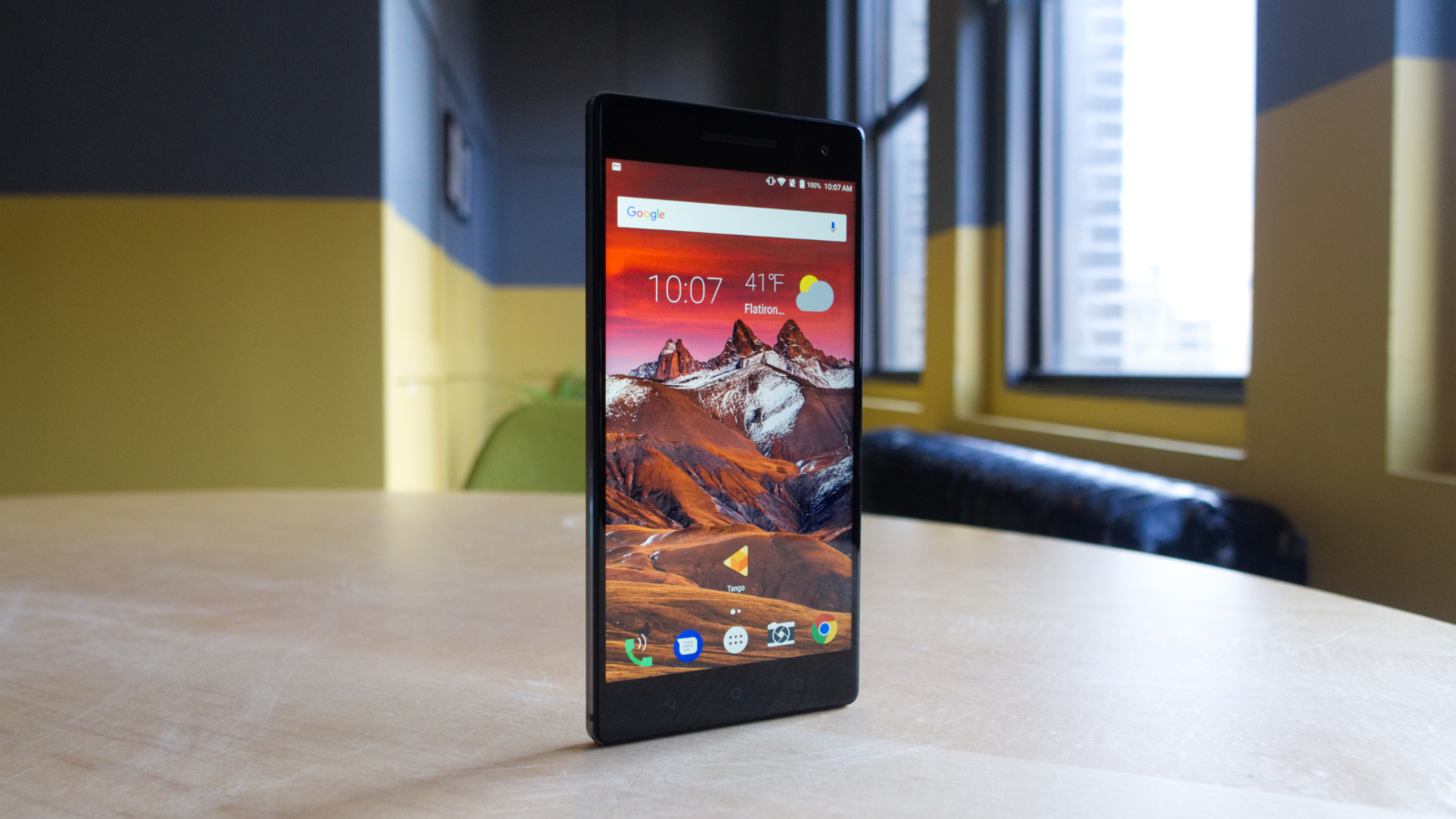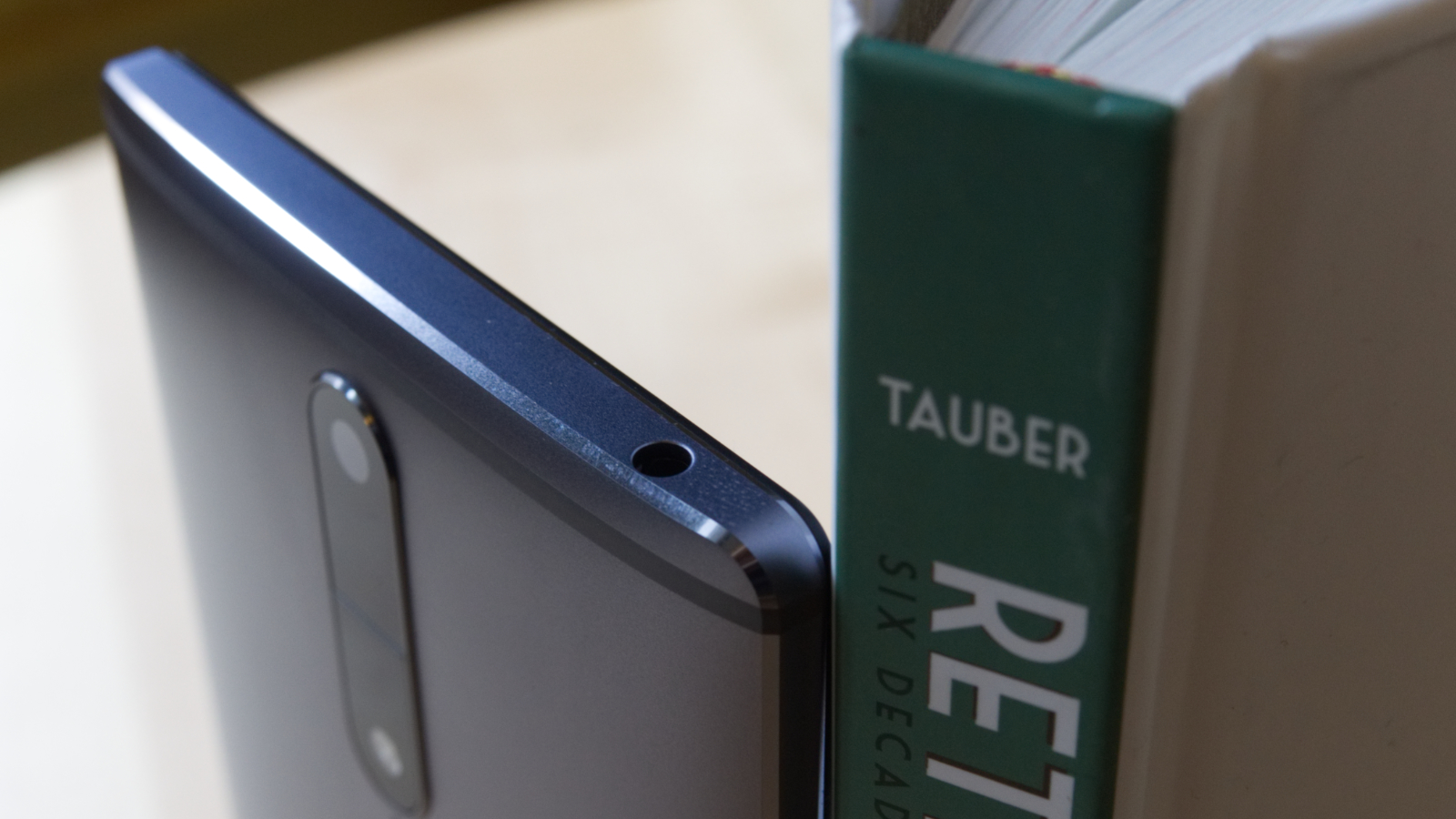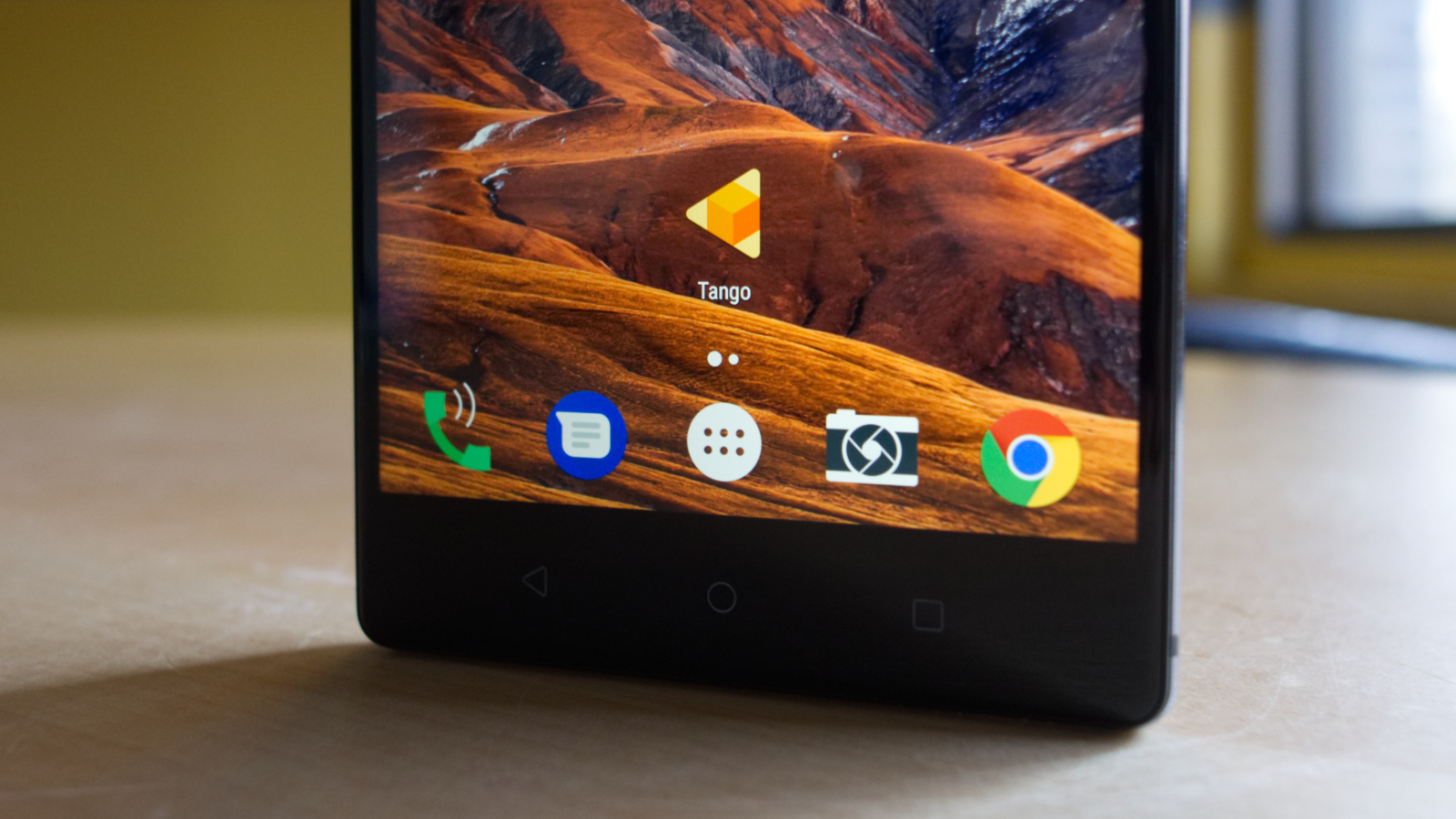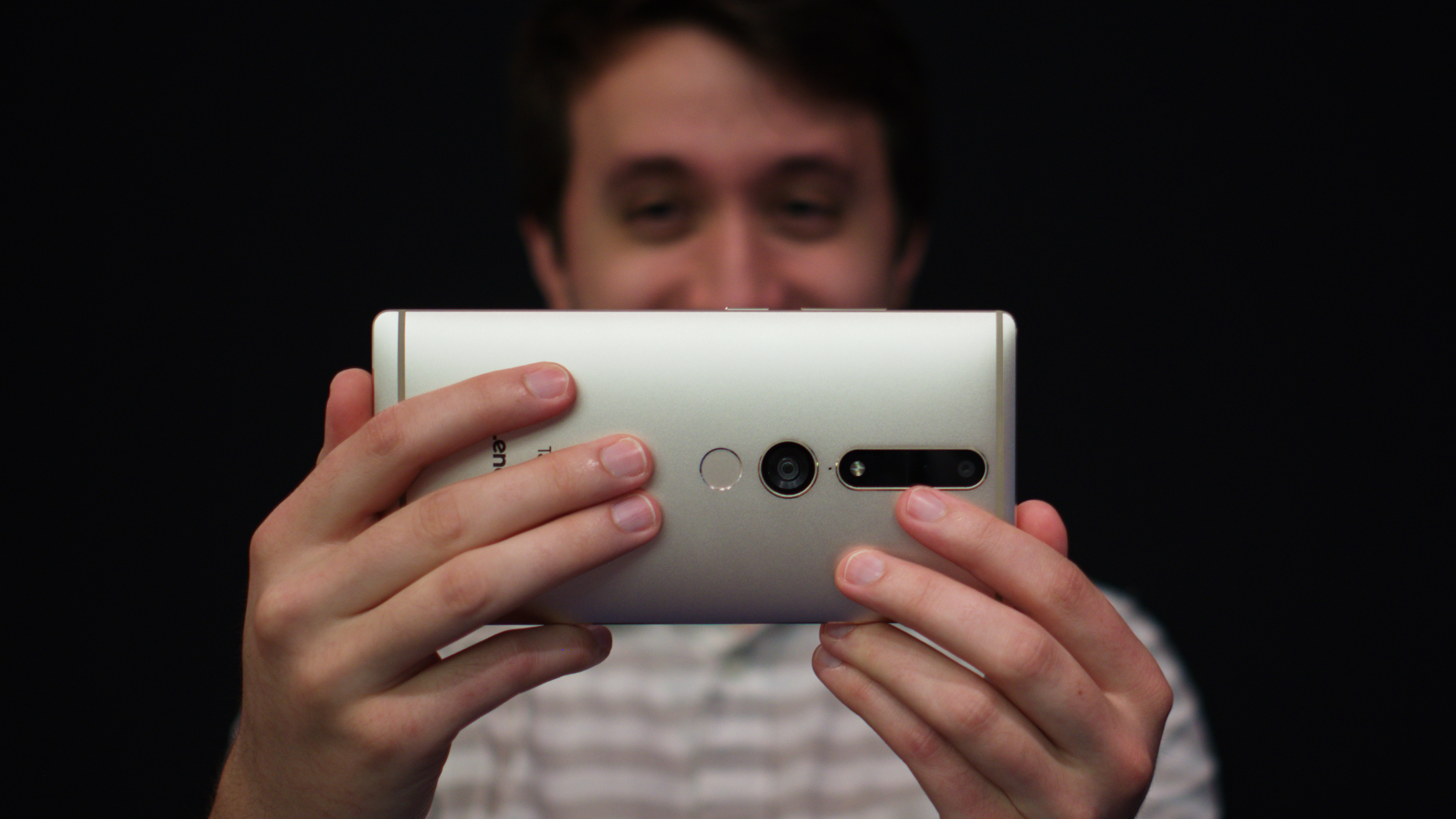Why you can trust TechRadar
Interface and reliability
- Lenovo has made very few tweaks to stock Android Marshmallow
- Some custom interface animations could benefit from polish
- Kudos for allowing users to uninstall bloatware
The Lenovo Phab 2 Pro sets itself apart with its enormous size, but what you’ll find inside is, more or less, par for the course in a 2016 Android phone. Unlike Motorola, which has been pushing Android Nougat in its wide range of devices, parent company Lenovo has stuck with Android Marshmallow 6.0.1, which is likely the most stable release supporting Tango.
Compared to companies like Sony, Samsung and LG, Lenovo only makes very minor tweaks to the stock formula here. You’ll find custom touches on the pull-down pane and in the app selection screen, but it’s nothing drastic.
Lenovo has provided its take on a few basic apps, like Email and Gallery, and there are also some apps that could be considered bloatware here, like McAfee antivirus and SHAREit, a media sharing application that’s pretty unnecessary, but unobtrusive in its design. Thankfully, Lenovo enables the user to uninstall the pre-loaded applications.
All said, it’s simple to customize the look of the Phab 2 Pro, and the interface does a good job of getting out of the way.
Movies, music and gaming
- 2K IPS display is a brilliant companion for movies and games
- Dolby app can really enhance the listening experience
- 64GB of storage is generous, as is the microSD slot
The bottom-firing speakers work against the Lenovo Phab 2 Pro’s multimedia chops right out of the gate, but that’s the only downside here.
As expected, the 2K IPS display looks phenomenal if you’re watching a movie or TV show. Colors are accurate and the image moves fluidly. Just make sure that you don’t disrupt the presentation by accidentally hitting one of the capacitive navigation buttons embedded into the phone’s bezel (it happens).

Listening to music is simple, and you’re probably already equipped to plug into the Phab 2 Pro, thanks to the phone’s 3.5mm jack. But, in case you aren’t, Lenovo has tossed in a set of JBL earbuds that are fine in a pinch, but don’t sit in the ear securely or comfortably.
Additionally, the audio backbone of this phone is provided by Dolby. While listening through the built-in speakers is fairly unpleasant, the Dolby Atmos app allows you amp things up by choosing between equalizer presets, or creating one of your very own. Although the difference between listening with the app on and off is usually negligible, certain music selections (and movies) sound much better funneled through Dolby’s software.

That goes for games, too, which sound bombastic, and look it, too, on the 2K screen. The Phab 2 Pro has no issue running the latest games, thanks to its capable system-on-a-chip and sufficient RAM count.
To top it off, Lenovo opted for 64GB of storage by default. It’s a sizeable amount of wiggle room for movies, music and games, and thankfully, the microSD slot allows for even more space for your content.
Specs and performance benchmark explained
- The Tango-Friendly Snapdragon 652 can handle many tasks with ease
- 4GB of RAM will keep things running smoothly into the future
For a phone this large, you’re probably hoping for some serious specs. And considering the low price, Lenovo does a good job balancing performance and value.
Under the metal shell, there’s a Qualcomm Snapdragon 652 octa-core system-on-a-chip that has been tweaked to offer better Tango support. As we saw with the Sony Xperia X Compact, don’t judge a chip by its number.
The 652 gets closer than expected to some high-end competitors in the GeekBench 4 test, earning itself an average multi-core score of 3,440. This puts it above the Nexus 6P, but just a few hundred points shy of overtaking the US variant of the Samsung Galaxy S7.

Pushing the numbers aside, this phone provides a generally phabulous experience in day-to-day use. The Adreno 510 GPU tags along in tow to push the graphics, keeping games at a solid framerate, and the 4GB of RAM built-in helps to keep the operating system moving at a steady clip, even when under a heavy load.
The Phab 2 Pro requires hearty specs for more reasons than most phones. This phone packs in Tango, Google’s environmental mapping and augmented reality technology. When running, the Snapdragon 652 is powering the 2K screen, a 16MP camera, a depth sensor, motion tracker, and its internal sensors simultaneously.
For such an intensive task, it holds up reliably. That said, some of the Tango apps crash infrequently, and the battery (understandably) tanks while using Tango. We’ll dig more into the stand-out feature on the next page.
Lastly, you might be wondering why Lenovo didn’t opt for the Snapdragon 820 or Snapdragon 821, both of which are on the list of supported chipsets for Tango. We asked that very question to Qualcomm, here’s the answer.
Cameron is a writer at The Verge, focused on reviews, deals coverage, and news. He wrote for magazines and websites such as The Verge, TechRadar, Practical Photoshop, Polygon, Eater and Al Bawaba.

